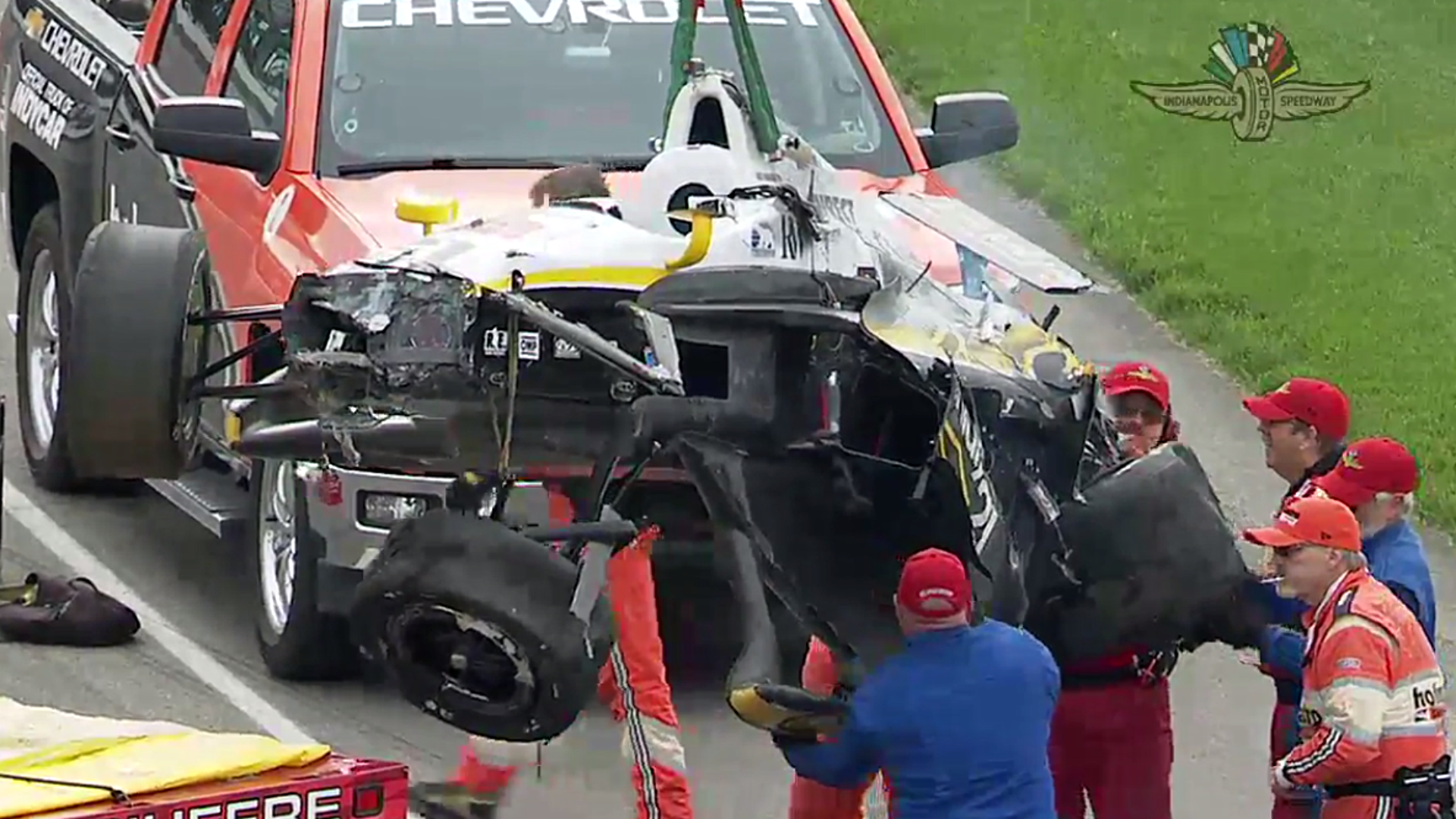What's the biggest story you remember involving preparation for today's Indianapolis 500?
Bet you said "the crashes."

And for good reason. The sight of cars driven by Helio Castroneves, Josef Newgarden and Ed Carpenter sailing toward disaster, and then tumbling while parts fly off in every direction drew media attention.
Or James Hinchcliffe's crash, in which a car part penetrated his body.
MORE: Indianapolis 500 starting grid | Five things to know | Winners | NASCAR drivers in the 500
Consider this from Bob Kravitz, writing for Indianapolis TV station WTHR.
Danger brings eyeballs, sporting rubber-neckers. The marginal fan isn't going to tune in to watch Rahal or Andretti or Helio; the marginal fan will tune in because this feels like the most dangerous Indianapolis 500 in many years. Whether it is or is not is entirely beside the point; it's the grisly specter of danger that makes this year's 500 so ghoulishly compelling.
The day of the 99th running of the race, which begins about noon ET, the only time really that open-wheel relevant to more than hardcore fans, everyone is talking about what might happen at Indy.
Just like NASCAR fans who watch for "the big one" week after week but can't tell you who leads the Sprint Cup standings, IndyCar fans pay attention only when the yellow flag flies.
So, OK, we'll indulge your morbid curiosity.
Did you watch the whole video?
The last thing IndyCar wants is to see any driver injured. The sport made great strides since a series of drivers died in fiery crashes. But bad things still happen when a car running at more than 200 mph goes out of control.
Happens in NASCAR; happens in Formula One.
So on another Sunday in Indiana, hopes focus on safety. Reality says disaster awaits at any of the four turns at the old brickyard. Because now, there will be 33 cars on the track, not just two or three.
"This will never be a safe race — it's an open wheel car going 230 mph over three and a half hours trying to win," driver Oriol Servia told The Associated Press. "Safe is not really what defines it. It will never be. But I think it could be safer than what we'll do Sunday."
The men behind the wheels will determine what happens — unless there are inherent flaws in their machines. We are assured there aren't.
"People make mistakes, whether it is human mistakes, mechanical mistakes, it is part of what we do," driver Sebastien Bourdais said in the AP story. "That needs to be respected because when you travel at the speeds we travel, things can go bad. When it goes bad, it shouldn't be, 'Oh my God, what just happened?' What happened is what we do is dangerous."
IndyCar often is short of racing action of the kind NASCAR enjoys. Fragile cars don't react well to being bumped, thumped or rubbed.
So here's a hope for the 99th Indianapolis 500: Finish safe. There will be a winner; there will be excitement and speed and, yes, crashes. Let's see 33 men walking away from "the greatest spectacle in racing" without injury.
